Bright and early one Saturday morning in June 2000, around 25 men scuttled down a castle stairway, into the long corridor of a stable. Each buck naked save for a ragged pair of shoes, neck collar, and set of clanking leg irons, they tripped and stumbled as a line of imperious, gorgeous young women, clad in leather fetish gear, caned them with a gauntlet of long rods. Suddenly, the men burst forth into the warm, sunny air and started to fan out, scattering across an open, 2-acre field. Then, quick on their heels, about 35 new women, likewise clad in domination getups, marched out after the men, carrying with them rods, riding crops, and dozens of eggs.
As the shackled men scrambled through muddy ponds, trying and failing to climb little hillocks, the women lit out after them, hurling eggs left and right. Every time a cold, hard shell smacked into the soft flesh of one of the running men, he stopped, turned, and crawled back to the woman who’d pegged him, sometimes licking or kissing her boots before being dragged back to a holding pen. Once inside, the detained men obediently let the women whip and smack them—and with each blow, the struck man breathlessly and profusely thanked his cajoling, laughing striker.
Few people ever got to witness this bizarre spectacle. Known as the Slave Hunt, that year it was one of many such events commemorating the Celebration of Female Dominance, an annual festival in the self-declared and exclusive sovereign nation known as the Other World Kingdom. Over the years, the celebration featured many types of events, ranging from whipped-ass competitions judged on a woman’s stylistic delivery of blows, to slave auctions in which ladies used the Kingdom’s currency to buy and sell humble men, singing, dancing, and running laps to prove their virility and merit. There were also public trials against men who broke the nation’s rules—failing to bow to the land’s female residents, taking off collars that marked them as chattel inferiors, or in any way displeasing one of the Mistresses of the realm.
Every event served to highlight and reaffirm the central values governing the day-to-day affairs of the OWK: Women are the superior sex. Men, although of varied ranks and class, under the Kingdom’s laws are all regarded as “slaves,” destined to servitude. And women of the OWK must control men with forceful punishments—humiliations for which the men will thank them.
[quote position="full" is_quote="true"]Every time a cold, hard shell smacked into the soft flesh of one of the running men, he stopped, turned, and crawled back to the woman who’d pegged him...[/quote]
To those of us living ho-hum lives in this publicly vanilla, overwhelmingly patriarchal world, stories about the OWK sound too outlandish to be true. Many accounts of the realm are written in the lurid, purple prose of slash fiction. When I first ran across them, in the obscure culs-de-sac of the internet many of us only visit in the curious insomnia of the wee hours, I too suspected they were amateur pastiches of seminal sadomasochistic erotica. I thought I saw elements of Marquis de Sade’s The 120 Days of Sodom, Pauline Reage’s The Story of O, Anne Rice’s Exit to Eden, and other works painting images of alternative worlds where notions of pain and pleasure and the balance of our social order get turned all about.
But the OWK wasn’t fantasy. It was a real place—a micronation (or self-declared state within a state) that managed to operate under its own laws for more than a decade before shutting down. Whereas most micronations are scams or jokes at worst and protests or libertarian communes at best, the OWK was a singularly bold experiment. It attempted to create a society around inverted gender norms, inspired by the principles of a type of BDSM—an overlapping abbreviation that stands for Bondage and Discipline (BD), Dominance and Submission (DS), and Sadism and Masochism (SM)—known as female domination, or “femdom.”
Almost by definition, femdom has traditionally been a marginal and transgressive identity worn for an hour or two in special places, and then taken off as people walked back into the real world. But the OWK took that ephemeral, transitory lifestyle and brought it out into the open as the normative, permanent, and legal basis of an intentional community. Even though in hindsight such an audacious, idealistic project seemed destined to fail, the place became an enduring icon, testing the limits of sexual and political identity by probing the way people integrate compartmentalized fantasies into their everyday lives.
The Rule of Superior Women
Though the OWK was ultimately shuttered in 2008, many dominant ladies and slaves recorded their experiences of the Kingdom in excruciating detail (the tale of the Slave Hunt, for example, was written down by a slave of an American woman who goes by the name Mistress Troy in the femdom world). Because the Queen and her government used their castle as the setting for many BDSM porn video shoots, there’s also an extensive visual record of the Kingdom and its rituals. And despite the intense privacy of many participating in the lifestyle, a few femdom women and men are willing to open up about their personal experiences with the Queen and her government, speaking under their in-lifestyle names rather than their everyday identities.
Many of these accounts seem fanciful or subjective, to say the least. Many of them disagree on a point here or there. But underneath the florid verbiage, these records begin to coalesce into a consistent and concise image of the state—an oral tradition, or a CIA World Factbook profile for a country that never quite was. Here are the most essential facts about the Kingdom that diverse accounts converge upon:
Created on June 1, 1996, near Cerna Hora, a town of about 2,000 people in the eastern Czech Republic, just off the highway from the city of Brno, the OWK claimed about 8 acres of land. An absolute matriarchal monarchy, it was dominated by the seat of the Queen—a 31-bed, 31-bath cream-colored castle, with a burnt-orange roof, built in 1580. Beyond the castle lay the Black City, a collection of chateaus equipped with stables, libraries, and banqueting halls (as well as prisons, torture chambers, sadomasochistic night clubs, and restaurants), which served as the Kingdom’s capital and sole city.
After a year of renovations costing 2 million euros in today’s money ($2.34 million), the Queen opened the OWK in 1997, inviting all dominant females and willfully submissive males to join her. The dominatrices came from all walks of life, although given the location and expense of the OWK’s facilities, many of the micronation’s denizens were Europeans and people of means. Each female citizen was theoretically required to possess at least one slave.
As for the men who gave themselves to the OWK, some came with a Mistress, often paying her way, though remaining subservient. Some came alone and fully self-funded, or worked off their stay with labor under the Queen or an assigned Lady. Those who came with a woman would often remain kept in her private room, and might not have gotten to know the other slaves much. But the lone men, often caged together or left in the fields to labor out of sight and for hours on end, made friends and bonded illicitly, getting to know each other and joking around about the peculiarities of their submissive existence.
One man, who wrote his account of a fortnight spent as a working slave at the OWK in 2001, recalls how when the Mistresses were out of earshot, he and the other maintenance-work slaves would whisper about their lives, using their real names: Garry was from Texas, but had Czech family roots. Steve was a Kiwi who’d never been further than Australia before this. They all knew this fraternizing was punishable by a brutal flogging.
“The guys that were paying to be slaves were constantly watched by women guards so there was no masturbation,” says Lady Femina, a former citizen of the OWK, recalling the control (and pleasure therein) slaves experienced. “I had a great idea for a little side business: If just outside the [Kingdom] there was a little jerk-off booth. These guys must have been crazy by the time they got out of there if they were really having a good time.”
Slaves and “doms,” each played their part in pursuit of the Kingdom’s explicit goal: “to get as many male creatures under the unlimited rule of Superior Women on as much territory as possible.”
Femdom in the Wild
BDSM is a deep grab bag of concepts, but essentially boils down to defining any sexual practice that plays around with power dynamics and the continuum of pleasure and pain. It’s a malleable and fluid lifestyle, with different practices from partner to partner, or encounter to encounter. (This variability has necessitated the creation of a culture of express consent and comprehensive communication.) For some people, it’s just about the pain, but for many it’s about escaping or recoding mainstream social boundaries, playing with taboos, or rewriting power dynamics in a safe way.
That can be fun, but it can also be political, or therapeutic. Ingrid Olson, a doctoral candidate at the University of British Columbia, notes one telling case where a wheelchair user dominated an able-bodied individual, an inversion of elements around living with a disability. Yet despite the convention-bending potential of BDSM, gender norms still prevail, with up to 89 percent of kink women taking on submissive roles and 71 percent of kink men assuming dominant ones. This makes femdom, a BDSM niche in which a female (dubbed a Madame, Mistress, Dominatrix, or Lady) is dominant while a male is submissive and worshipful, a minority lifestyle within a minority lifestyle.
“Some people find this incredibly sexual,” a dominatrix told Danielle Lindemann, a rare femdom-focused sociologist, in a 2010 article. “To me it’s erotic but I find it mostly stimulating from the neck up. To me it’s an art form. I have to know that I can step on a person without breaking a rib. I know that I have to be incredibly careful and delicate because something could bruise when it’s not supposed to and do real damage when it’s not supposed to.”
[quote position="full" is_quote="true"]To me it’s erotic but I find it mostly stimulating from the neck up. To me it’s an art form. I have to know that I can step on a person without breaking a rib.[/quote]
“It’s aesthetic for me,” a submissive male told Lindemann on a separate occasion. “So I always want the tough positions that I’m put in to be photographed.”
The dominatrices at the core of the scene break down into two categories: “Professionals” who dominate paying clients and “lifestyles” who live femdom ideals in their personal relationships. A lifestyle Lady isn’t necessarily a professional, and a professional Lady is not necessarily in the lifestyle, although those who take on femdom in both their personal and professional lives tend to stay in the scene longer. These days, non-lifestyle pros are becoming increasingly common and many devotees fear that this trend is ruining the culture.
“They look good in some tight clothes and they could try to boss a guy around by being generally mean,” a submissive male told Lindemann of non-kink doms. “But it’s always sloppy and anybody looking in can tell you, that knows something about the scene—they can just tell that it’s a hodgepodge mixture of unorganized actions, and it’s usually pretty terrible-looking.”
But even the most committed dominatrices and submissives can’t live in that mode of domination or servitude all the time. The belief in the supremacy of women may lie within them at every waking moment, but they can’t always express it openly in day-to-day life.
The Femdom State
There have always been spaces for kinksters to get together—meetups, events, clubs—and since the advent of virtual realities, kink subcultures have established internet-based societies around their values. Yet no matter how immersive or safe the environment, these realms remain secretive and often small places one slips into temporarily.
That didn’t sit well with a Czech dominatrix known as Patricia. According to those who met her at the inception of the OWK, she decided that there should be a space where people could live a femdom lifestyle not just in snippets, but full time. This, she decided, would necessitate more than the temporary suspension of societal norms—it would require the creation of a whole new society in which the social and political system inculcated and protected femdom values.
Patricia carefully crafted a comprehensive state system for her new reality. She created a flag—a female gender symbol inside a white shield placed within a field of colored triangles—and coat of arms (a golden crown with a whip, chain, female cross, and shackle). Her currency, the Dom, was pegged to the U.S. dollar, and was to be used for all purchases inside the Kingdom’s grounds. Finally, she named herself Queen Patricia I, the Sublime Supreme Administer of the realm.
Patricia also devised a legal code (mostly concerning proper attire and conduct for men, but also determining payment of taxes for the use of OWK facilities, and outlining regulations regarding citizenship), complete with an appointed Chief Justice overseeing bi-annual court hearings. Furthermore, she delegated a Queen’s Guard—a cabinet of Ladies dedicated to tasks like managing the state library, prison, and correspondences. The legal code also differentiated Sublime Ladies, the inner circle of citizens and the Queen’s ruling nobility, from visiting Ladies and other outsiders. Most intricately, she wrote contracts requiring men to declare themselves slaves in the OWK and to seek a status as close to servitude as possible under external legal systems.
“By signing this contract the male creature slave becomes a slave under the Laws of OWK,” reads a copy of one such contract. “The slave becomes immediately, fully, irrevocably, and unconditionally, the property of the Sublime Lady … The signing hereof is the last act of free will of the slave. The slave is understood as a creature, who on the basis of his voluntary decision, made in writing, has relinquished all human rights to the benefit of his Lady Owner.”
There was no space for non-submissive men, all men entering the Kingdom had to be some kind of slave. A complex caste system differentiated various levels of servitude. State slaves helped to run the facilities. Prison slaves lived in abysmal conditions, constantly. And slaves who were bonded to a visiting or citizen Lady were required to adhere to the rules and norms she set out for them.
Patricia wasn’t the first person to dream up a nation in a bedroom, but even by the standards of the world’s 400-plus micronations, this setup was unique in its form and rigor.
Granted, there’s a lot of variation among all of the world’s micronations, but the vast majority are either jokes (like the Republic of Uzupis, built in Lithuania around Frank Zappa), scams (like the Dominion of Melchizedek, which sold fake passports at inflated prices), or bids at bringing in a little tourism money (like the Republic of Saugeais in France). Those that aren’t jokes tend to be protest statements (like the Principality of Hutt River, a big “fuck you” from rural Australian farmers to grain production quotas) or political withdrawals (like the Principality of Freedonia, which tried to set up a libertarian utopia). Most micronations that become serious get shut down—the Republic of Minerva, which usurped some unclaimed reef islands in the Pacific to found a libertarian state, was quickly conquered by the little nation of Tonga.
It’s pretty telling that the most well-known micronation is the Principality of Sealand, a homestead created on a World War II-era British fortification in international waters by an eccentric in 1967. Surviving by chance as much as anything, Sealand has tried its hand at turning itself into a haven for numerous shady ventures over the years—its 30 or so residents mostly use the place as a way to turn a quick buck on their patriarch’s impulsive nation building.
Queen Patricia’s autonomous enclave had no parallel in the micronation community—both in terms of its complexity and its steadfast determination to turn a sexual lifestyle into the basis for a whole system of governance. And she was in the right place at the right time to start her own country. The mid- to late-1990s was a time of intense micronation proliferation and increasing publicity, eventually culminating in The Lonely Planet Guide to Self-Proclaimed Nations.
The mid-1990s was also a great time to get experimental in the Czech Republic. Land was cheap—a five-bedroom house might have run for about 35,000 euros in today’s money ($41,000) recalls one of the Queen’s associates. And farmers living on depopulated communes around dilapidated castles, like the one near Cerna Hora, were eager to unload the properties to anyone offering to help develop them, infusing a little money and business back into these teetering communities.
“The [surrounding village] people didn’t question things,” says Lady Femina. Femina, an American dominatrix who used to feature at The Loft and Hellfire Club in New York City in the 1980s, was an early associate of the Queen. She was the first American to visit the OWK and attain citizenship in 1997. “They kept their noses out of other people’s business for the purpose; that’s just how they were raised.”
“For these older people, they went through Nazism and then Communism. I think they just sloughed [the OWK] off as another phase of a political entity that was going to be changing their lives. And there was not a great deal of communication with the local people, except that [sometimes] guys harnessed pulling carriages with mistresses in them [would go] right through the town. But the townspeople, they just looked the other way. It was just very bizarre.”
A Grand Coronation
Lady Femina and her submissive husband, scene-name Tony, learned about the OWK like many in the pre-Google era: thumbing through publications at an adult bookshop. The duo, then living in Amsterdam, found an ad for a magazine called Other World Kingdom News No. 1, which purported to be the glossy and pornographic chronicle of a real-world femdom empire. The couple was skeptical, but they liked the fantasy, so they ordered a copy and perused the outlandish world within.
“The magazine featured Women ordering around male slaves on their knees, crawling through the mud, living in dog kennels and being punished in an underground jail,” Lady Femina later wrote in an article for Other World Kingdom News No. 4, chronicling her eventual introduction to the Queen. “The Women featured were beautiful and young—almost too beautiful and too young—but they did seem to have a truly regal demeanor about them.”
Other World Kingdom News No. 1 also contained an invitation to the Queen’s coronation event, held in 1997 from May 30 to 31.
The couple was skeptical—it all seemed like some gimmick. But they wanted to see post-communist Prague, having been there before the fall of the Berlin Wall. And the OWK was supposedly just an hour or so away, so they figured they could check it out and retreat if needed.
“My husband even said, ‘As we enter the front door, we’re going to see some old farmer with a pitchfork and he’ll just say, “What are you doing here”,’” recalls Lady Femina, chuckling. “But it was certainly legitimate.”
After knocking on a great wooden door, the duo was met by a male slave in a prisoner’s uniform and led into a long corridor lined with women and more slaves leashed up like guard dogs, lit by torches set into sconces in the walls. Exploring the grounds, they witnessed Queen’s Guard members whipping slaves working in the damp, cold showrooms filled with custom-made leather goods engraved with OWK symbols. They saw the State Power Station where men turned a giant wheel under the whip, just to generate enough power for the Lady mushing them on to see her handiwork—the ultimate teleology of femdom manifested in the movement’s stronghold.
“It all had an air of normalcy,” the Lady wrote in her Other World Kingdom News article at the time. “Normalcy for the OWK, that is.”
Later, they entered the Queen’s throne room, with a hundred other dominatrices and slaves from Austria, Belgium, the Czech Republic, France, Germany, the Netherlands, and Switzerland. They witnessed the Queen striding over a human carpet to her throne, showered with flower petals and flanked by a bowing Queen’s Guard and state slaves as she went. The Queen took her seat and the government of the OWK was officially in place, something the dominatrices celebrated with champagne and a performance by a dance troupe from Prague. The slaves celebrated by sleeping in the warm halls of the castle rather than in their prison cells, for that night at least.
[quote position="full" is_quote="true"]Men turned a giant wheel under the whip, just to generate enough power for the Lady mushing them on to see her handiwork—the ultimate teleology of femdom...[/quote]
Over the coming days, the dominatrices enjoyed all manner of creative events designed to humiliate the men around them.
“I hosted a dinner party [in my suite],” recalls Lady Femina. “I had this big, round table with a hole in the middle, where the slave would pop his head up and we’d do stupid things like stick french fries in his ears and smash peas in his face and throw food at him.”
By the end the dominatrices and the slaves were exhilarated, high on the potential of the OWK.
“It is not just a visit, it is a life experience,” wrote Lady Femina in her article, full of eager hope. “You may never think the same about where you living [sic], once you visit the OWK.”
She went on to predict that within five years a visit to the OWK would be an annual must-do for every dominant woman in the world, and approached the Queen to plan the logistics to start yearly familiarization trips, introducing North American femdom practitioners to the OWK. With a website under construction (a novel marketing move circa 1997) and tons of marketing in femdom-friendly shops around Europe, everyone believed for a moment that the Queen’s dream of a permanent femdom society would come true.
But it didn’t happen.
Harsh Realities
Despite all the excitement and advertising around the OWK, the Kingdom almost immediately started running into some very serious logistical problems that precluded doms and slaves from moving there in droves—much less even visiting on a regular basis. Chief among these roadblocks were the poor location of the Kingdom and the cost of operations.
“I think that people just didn’t want to move to this obscure place,” says Lady Femina, who also works in the travel and luxury industry. “Most of the people who came there are Europeans. If they’re going to move to a holiday village, they’re going to move someplace warm with sun.”
It was also a new environment in an uncertain political, social, and economic context.
“Nobody quite knew what was going to happen,” adds Lady Femina. “Nobody wanted to make an investment.”
And no matter when one came, whether it was dead and boring with only a skeleton crew of slaves on the grounds (most of the court went off to Prague when there weren’t any events going on), it still cost quite a bit to use the facilities. The place used hotel prices throughout.
Accordingly, the OWK increasingly became a themed resort more than a society, focusing on festival days though remaining desolate otherwise. The magazine and various femdom porn movies became the big money earners, and by the late-2000s a good number of doms were coming to use the place and its facilities as an icon in their own shoots, but not to live and commune there.
It didn’t help that the Queen was especially sketchy about the business side of the OWK either. No one I spoke to could tell me where the money for the Kingdom came from, although there were murmurs here and there that Russians were involved somehow. And even with people trying to do business with her, like Lady Femina and Tony, Patricia could be haughty and closed off.
“I wouldn’t want to offend Queen Patricia because she was very gracious with me and she was fine,” says Lady Femina. “But I think that mistresses tend to be a bit egotistical, as you can imagine, and she took that to the nth degree. I think that she rubbed some people wrong.”
“We found that she wasn’t prepared to really answer detailed questions about logistics,” adds Tony, recalling a meeting they had to discuss organized trips for North American groups. “Such as what kind of insurance the place had, was it listed as an actual hotel, what was its relationship with the Czech state, and so forth. So the concept [of our yearly trips] went nowhere.”
The imperious Queen also wound up making some weird judgment calls about what it meant to be in the femdom scene, imposing an incredibly hardline, brutal form of female domination that didn’t sit well with many dominatrices and seemed to run counter to the idiosyncratic and negotiated dynamic at the heart of femdom (and BDSM in general). Going by the accounts of some slaves and dominatrices, this may have been an attempt to reverse the trend of male-dominated BDSM sessions, aggressively reasserting the dominance of the woman in femdom relations and making sure that only submissives who got joy from being submissive joined the Kingdom. But no matter what the intent behind it was, it got pretty dark.
“Some of the slaves were treated in such a cruel manner that they were just getting gruel for food,” recalls Lady Femina. “They were getting held in the cages, maybe with 3 inches of cold water. It was more concentration camp-ish and a lot of the slaves were even in this sort of concentration camp garb, which I found particularly in bad taste. The slaves were getting ill.”
The Queen inculcated this harsh sensibility into the very fabric of the community by staffing her original court not with dominatrices, but with beautiful Czech models brought in from Prague (many believed it was a cheap bid to sell magazines early on). Not lifestyle femdom practitioners themselves, the Czech models wound up studying the Queen’s punishment style and becoming functionary brutalizers.
“They were just nasty,” says Tony. “Well, I wouldn’t say ‘nasty.’ They were businesslike. They were dominant with the guys, but they never convinced me they were really femdom.”
To her credit, the Queen made sure that every slave and Lady who entered the OWK knew the kind of punishment they were walking into and that they had the express consent of those arriving. Real, in-lifestyle dominatrices rotated in periodically from all over Europe and the Americas to host events too, adding some credibility to the experience. The Kingdom’s establishment also respected the rights of a light-pain submissive like Tony, who came not alone to be punished, but as the escort of Lady Femina. And other slaves, like one under a certain Madame Loreen, testified that the Ladies were professional and good at finding the spot just before abuse.
[quote position="full" is_quote="true"]It was...concentration camp-ish and a lot of the slaves were even in this sort of concentration camp garb, which I found particularly in bad taste. The slaves were getting ill.[/quote]
“I found that the practices were extreme,” admits Tony, “but the guys there seemed to like it. I mean … I didn’t see anybody running away or crying or complaining.”
Ultimately, the Queen created the OWK based on an image of femdom as she saw it in an era before the internet helped practitioners to realize the immense variation of lifestyles in the scene. Though she seemed not to have realized, or maybe just didn’t care, that her vision and regime of extreme violence appealed only to a minority in the already minuscule community. And the number within that minority who would want to live that cruelty full time—that is people perpetually remaining in-lifestyle, individuals who Lindemann, the dominatrix sociologist, dubs “role-engulfed”—was a smaller minority still.
I asked Lindemann how many role-engulfed dominatrices she knew, and she said she’d never met any, but she’d heard stories from her contacts in the scene. All of them viewed these permanently dominant women as too intense—saying that their dominatrix personas weren’t meant to be inhabited for more than a few hours, or perhaps overnight at most, and their everyday relations with men and with the rest of the human population ought to be significantly different.
Everybody was on board with the general concept of the OWK, say Lady Femina and Tony, but in the end the extreme punishments were just too much, too silly, and too long-lasting for most doms.
“To work in a real femdom society, you can’t do that constantly. You have to have some kind of give and take in it,” says Tony, hitting upon one of the big precepts of BDSM: the need for a fluidity and dialogue, grounded in mutual respect. Foundational cultural elements, of consent, of individuality, of negotiation, were eaten away by the state’s unilateral imposition—one vision of an inverted existence turned into an unyielding new world order.
Nobody’s quite sure what the final straw was—the inability to find a better property (apparently they were looking into lots along the French Riviera or in Spain), the costs, the ideological issues with Queen Patricia’s extreme punishments, or just the global financial crisis—but in 2008 the OWK folded as a nation. They put the castle up for sale for 8 million euros ($9.37 million), billing it as a potential hotel, personal residence, or even a home for the elderly.
First Mistress Madame Gabrielle, one of the Sublime Ladies, tried to save the Kingdom by refashioning it as The Femdom Republic, creating a shareholders’ representative government. For 300 euros ($351) a share, you could own a stake in the nation (she hoped to sell 20,000 shares). But she managed to sell just 3,000, and on April 25, 2011, the OWK and all of its furnishings were sold off after three years of being on the market.
The OWK didn’t disappear entirely. The website set up back in 1997 still boasts tens of thousands of members and posts 15 new photos a day, sending out email lists about femdom movies, and publishing new editions of the Other World Kingdom News and Under Her, another femdom magazine. Soon after the closure of the physical space, some of the staff created a mirror of the castle in the online virtual world Second Life, voting on a new Queen serving a three-month term, granting citizenship to those who spent at least 10 hours in the virtual nation per week, and charging enough to sustain the Second Life simulation and subsidize the OWK publishing house. But these digital spaces are no replacement for the real thing.
“It is more than just another failing concern,” says V, a slave of Mistress Alexia Jordan, writing plaintively on the submissives site Sissify. “It is a symbol. It is [a] magical place in our minds whose halls harbor millions of feverish dreams held by and cherished by submissives imagining a place where who and what they are has a purpose. [Hearing about its closure is] like telling a child that Neverland has been flooded with toxic waste … Or Hogwarts has gone Condo.”
As for Queen Patricia, she melted away into the mists. Careful readers of OWK literature were sure to notice that the Queen took great pains to retain her anonymity, never showing her face in public photos and never listing any of her details. Femina and others were unsure of her background. Most at least agree that Patricia was Czech, and some suspect she may have chosen the location because she had roots in the area. Others think there must have been some kind of connection to Russian wealth somewhere in her history, although that’s more speculation than anything else. Some suspect she just retired, thinking her job was done, and moved to warmer climes, basking in the anonymity of her real-world identity and leaving the OWK behind.
That meticulously maintained anonymity has made it extremely difficult for anyone to track the Queen down. After many conversations with doms, deep dives further into notes and records of the OWK than I’d ever thought I’d go, and a series of dead-end emails and phone calls either ringing out or picked up by bemused Czech men, I too came up with nothing. It’s a frustrating disappearing act, given how much remains unknown about her intentions, her finances, and the deepest inner workings of the OWK. But in a way it’s fitting. All these lacunae leave us with a mythic decline of what still seems a fantastical parallel world.
Until Kingdom Come
The OWK was destined to fail from day one. As a business, it was doomed by all the dull pragmatics of money and leadership. But as a political entity and a full-time society, it never really even managed to make it off the ground, for the simple fact that it was a utopian space built around the forceful elevation of one very niche and uncompromising form of identity over all others.
Humans are humans because we are complex—full of shifting, fluid identities, which we switch between on a whim. We often choose to present ourselves and read the world through one or more dominant identities: “I am Christian,” or “I am kink,” or “I am a goddamn lumberjack.” But such acknowledgements, although varied in their extent, never excoriate the rest of who we are. A man may define himself as one thing above all else, but if kink is also part of his persona, then it’s pretty likely that, even if he never tells a soul around him, he’s still seeding his life with the scene’s subversive values and modes of communication.
Unfortunately, not every identity lines up with the mainstream world we all inhabit. This sense that the world will crush or oppose one’s main sense of identity is the force that leads some groups to withdraw onto communes, creating new worlds in which they feel more comfortable.
Kink especially, as an identity explicitly built around the dismantling and rearrangement of the world, often grates up against the realities and existing power dynamics of everyday life. Admittedly, through bestseller-turned-blockbuster Fifty Shades of Grey (which most in the kink world dismiss as coercion and manipulation, rather than real-deal BDSM), kink clubs and parties at colleges, and similar open, public discussions of BDSM, it’s getting easier to publicly admit to being a part of kink culture. Yet much of BDSM also seems to require a blank canvas—a dungeon or a club or even an appropriated bedroom, a workshop for the crafting of one world apart from another. It’s a state of perpetual creation and destruction. But there’s only so much you can do in a little rented basement with a leather pony in the corner, or with a group of local, small-town kinksters. That makes the idea of an entire world tailor-made to this underfed part of one’s identity exceptionally attractive.
The OWK, seen from afar, was that ideal for femdom. A place where a woman in leather gear could ride through town atop a carriage pulled by a shackled man, through fields of lounging dominatrices twiddling their whips as men bowed, scraped, and groveled nearby. One could stay in character as long as he or she wanted, use a vast number of resources, and commune with kindred spirits to explore an infinite number of ways to realize this inversion of gender dynamics as openly, blatantly, and freely as one might desire.
But that’s not what it became. Queen Patricia didn’t open the ultimate safe space for people to explore femdom as they saw it. She created a society bound by laws and rituals that interpreted and autocratically enforced her own version of the culture. The Queen’s world didn’t just dictate the contours of femdom to a world used to idiosyncrasies and negotiations. It left almost no room for people to openly express their other identities. It implicitly preached a type of role engulfment that encouraged people, literally shut behind the gates of a castle, to excoriate the rest of themselves while they were there. The space didn’t allow Other Worlders to slipstream between different aspects of their being—to momentarily interact equally with a partner-in-fantasy in the aftermath of a satisfying domination tableau, or to take on a different persona to discuss something other than femdom for a bit.
And yet the OWK is still an important, unmatched social experiment, mourned by those in the BDSM world. It was a fantasy-become-reality that fell back into the realm of fantasy. And maybe that’s the ideal role for the OWK today: to be the flickering blue light on a screen, spinning tall tales of revelatory microcosms, captivating and strange. Maybe the OWK works best as a ruin, an empty castle on a hill, inviting people to imagine it as it could have been—a space where gender norms held no lingering weight, where marginalized identities could be expressed without fear, and where individuals could live out their own fantastic visions of other worlds.















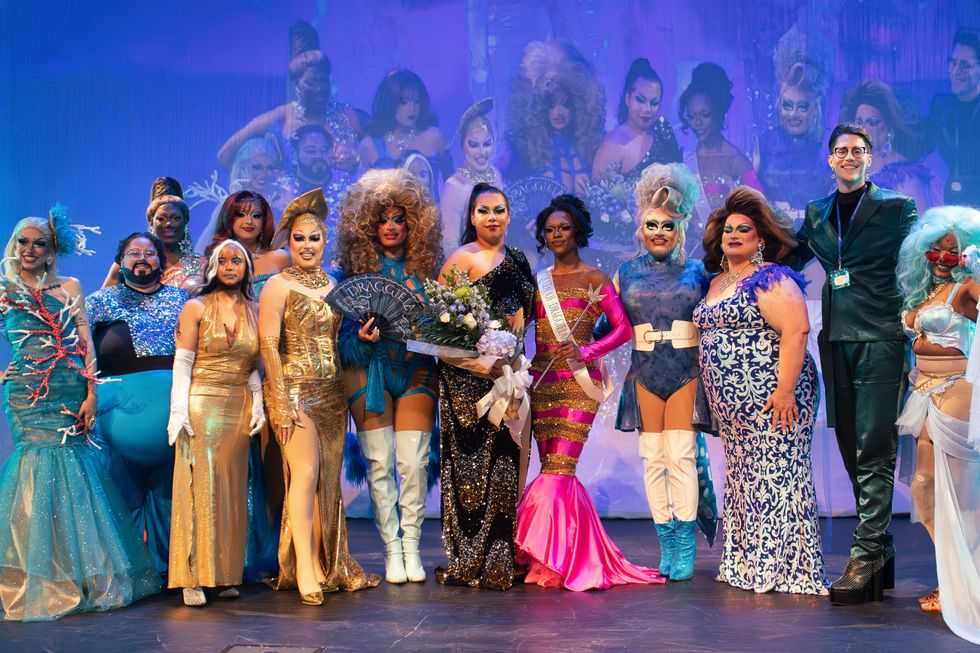 The contestants and hosts of Draggieland 2025Faith Cooper
The contestants and hosts of Draggieland 2025Faith Cooper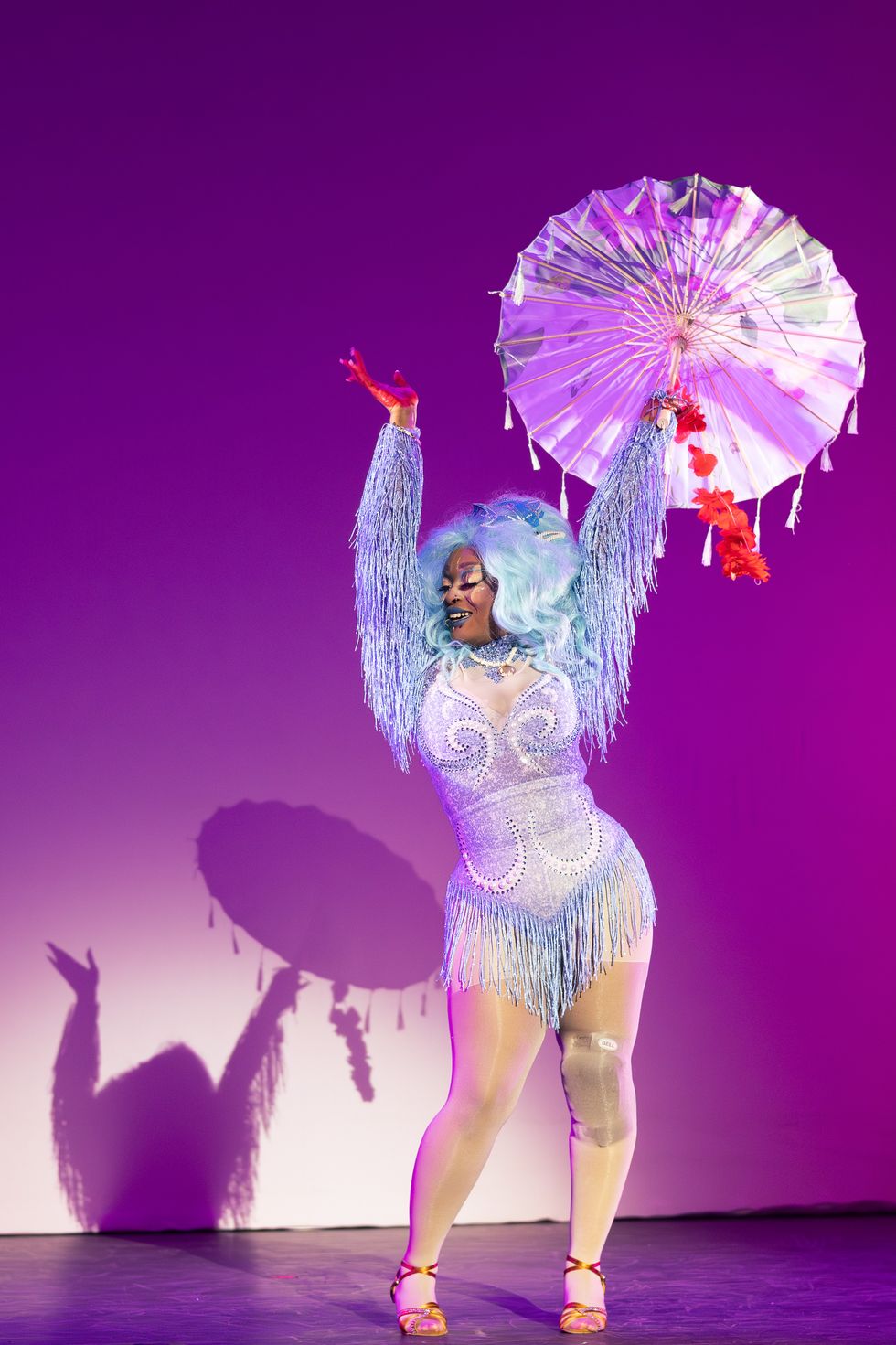 Dulce Gabbana performs at Draggieland 2025.Faith Cooper
Dulce Gabbana performs at Draggieland 2025.Faith Cooper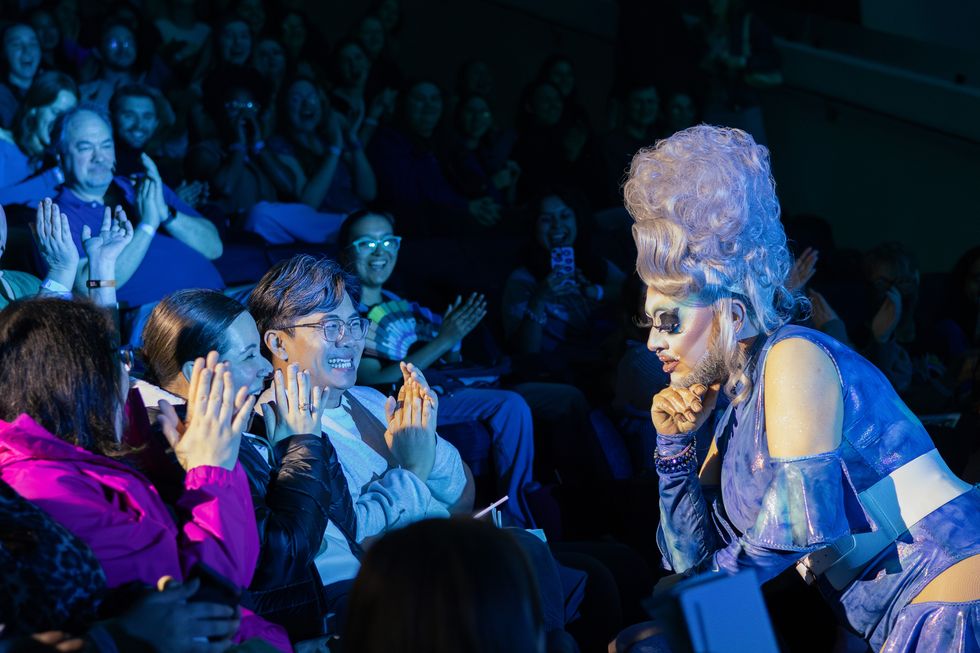 Melaka Mystika, guest host of Texas A&M's Draggieland, entertains the crowd
Faith Cooper
Melaka Mystika, guest host of Texas A&M's Draggieland, entertains the crowd
Faith Cooper

 It's a beautiful day outside Wrigley Field. | It's a beautif… | Flickr
It's a beautiful day outside Wrigley Field. | It's a beautif… | Flickr

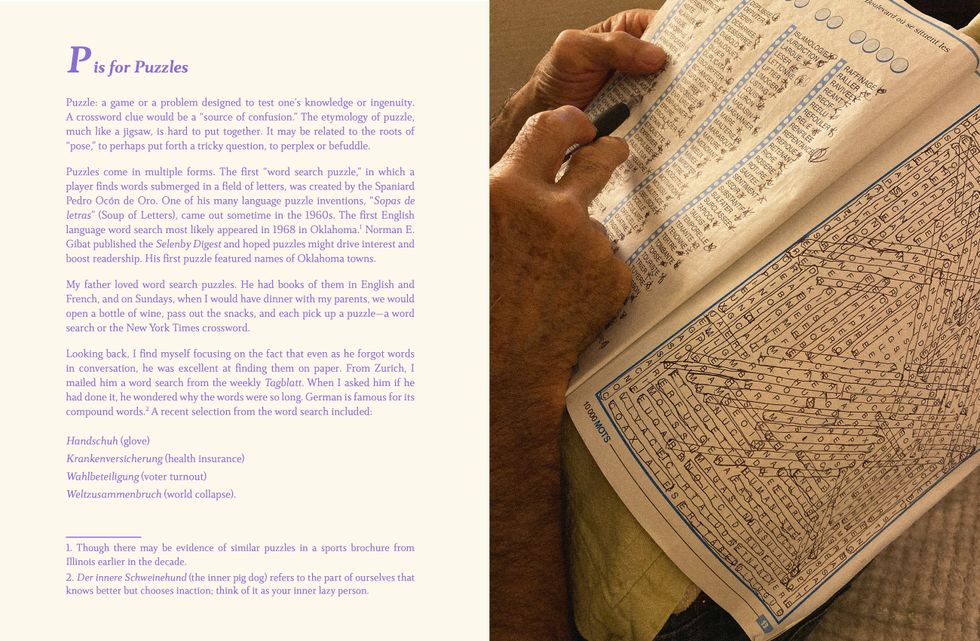 Selection from Magali Duzant's La vie is like thatMagali Duzant
Selection from Magali Duzant's La vie is like thatMagali Duzant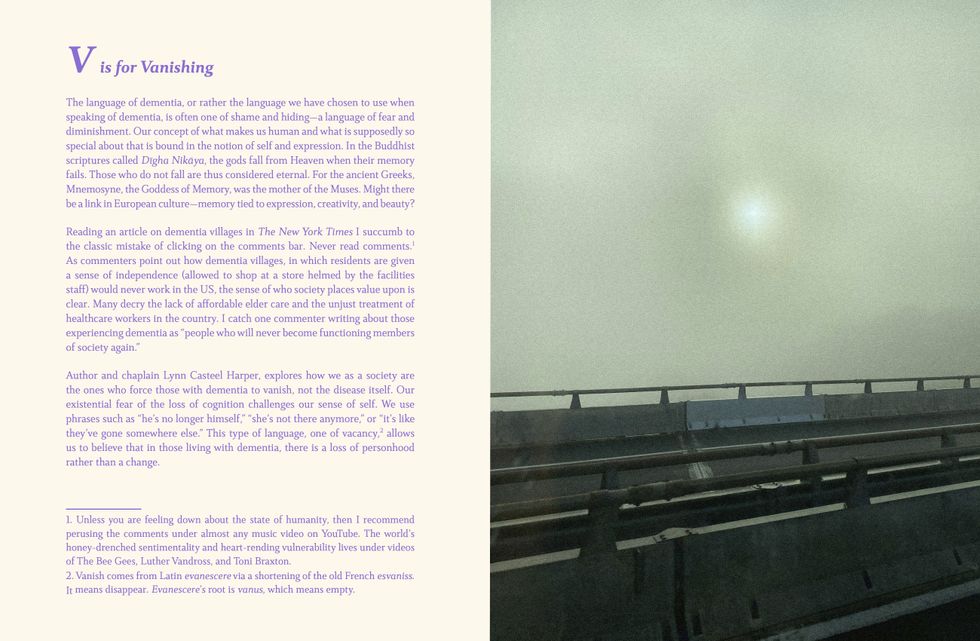 Selection from Magali Duzant's La vie is like thatMagali Duzant
Selection from Magali Duzant's La vie is like thatMagali Duzant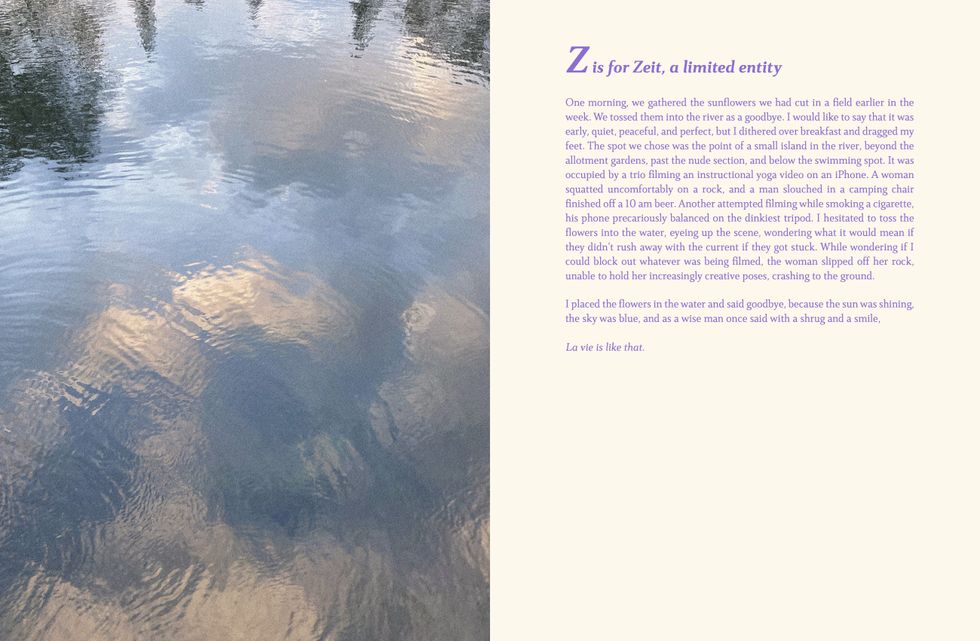 Selection from Magali Duzant's La vie is like thatMagali Duzant
Selection from Magali Duzant's La vie is like thatMagali Duzant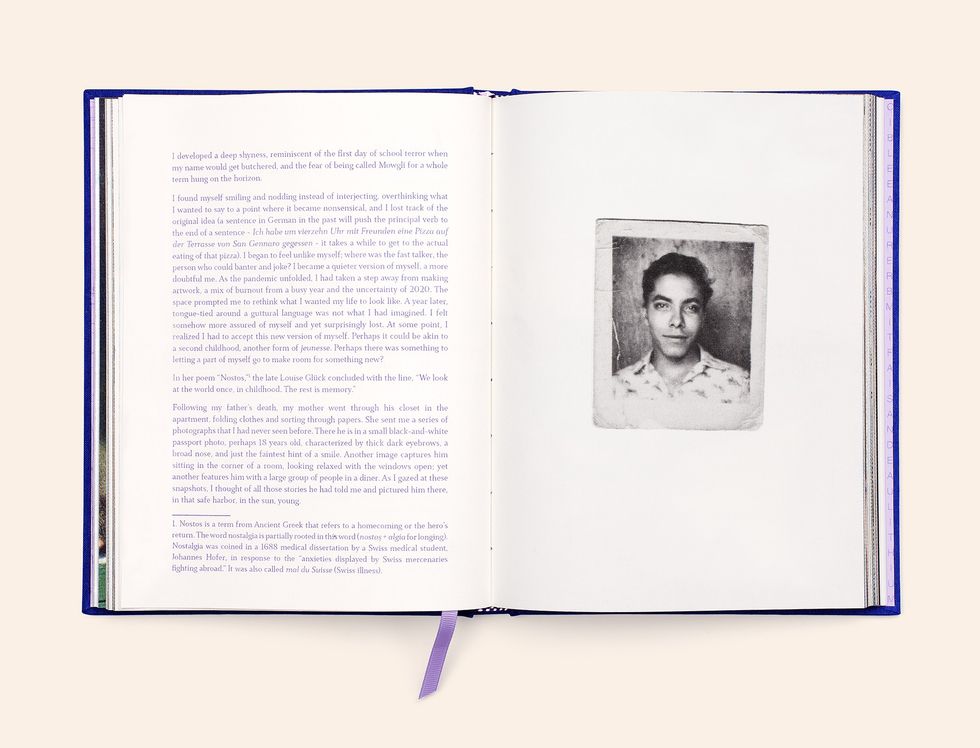 Selection from Magali Duzant's La vie is like that featuring her father, Jean Gérard Benoît Duzant, as a young man.Magali Duzant
Selection from Magali Duzant's La vie is like that featuring her father, Jean Gérard Benoît Duzant, as a young man.Magali Duzant
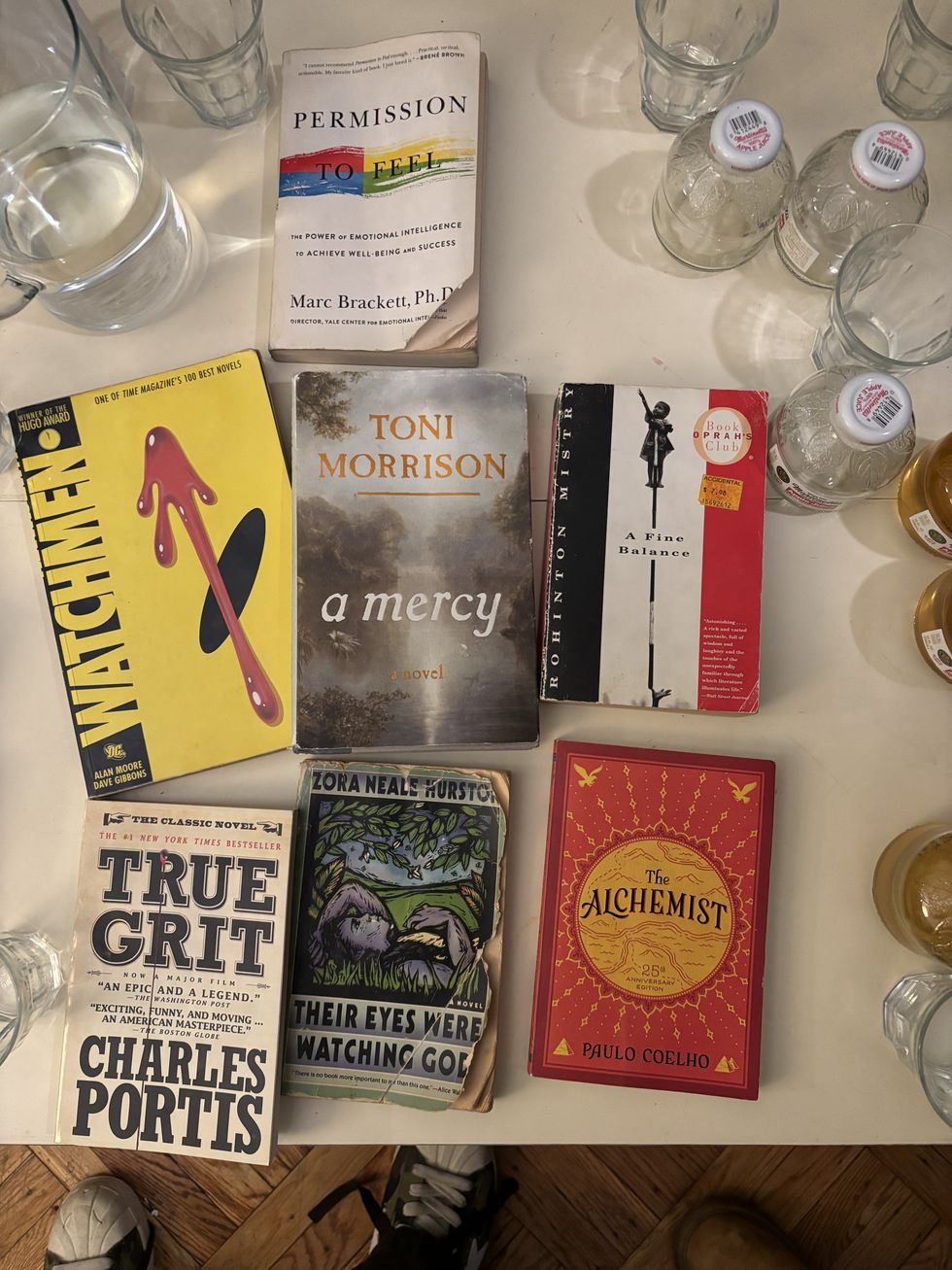 Books at the first meeting of the Fiction Revival book clubYahdon Israel
Books at the first meeting of the Fiction Revival book clubYahdon Israel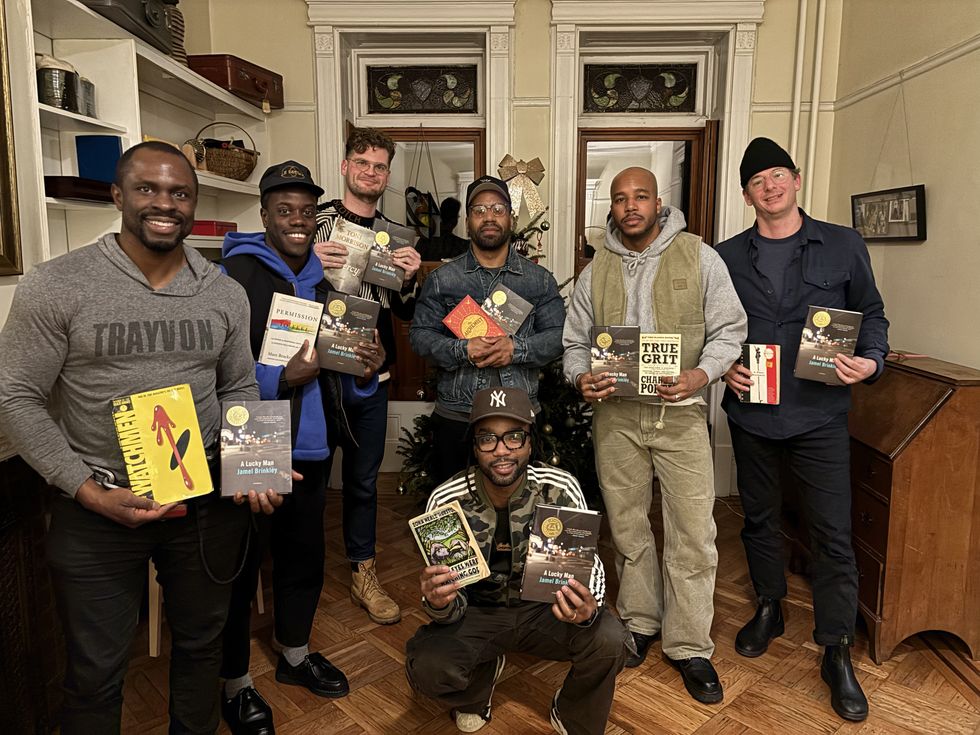 Attendees at the first Fiction Revival meeting.Yahdon Israel
Attendees at the first Fiction Revival meeting.Yahdon Israel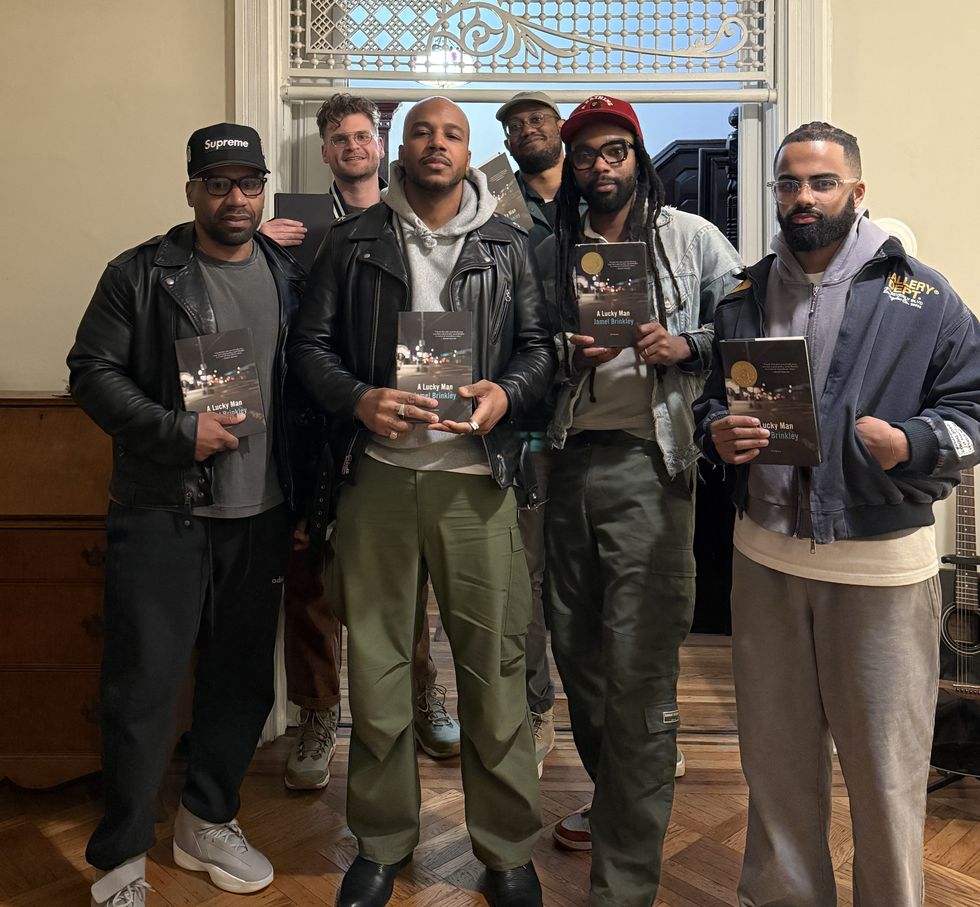 Attendees at the second Fiction Revival meeting.Yahdon Israel
Attendees at the second Fiction Revival meeting.Yahdon Israel

